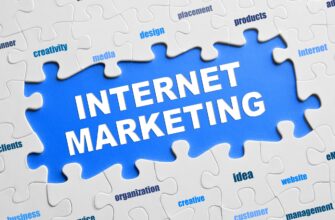- How to raise the effectiveness of contextual advertising by working with semantics?
- Select the right keywords
- Regularly supplement minus-phrases
- Study your competitors
- How to increase the effectiveness of contextual advertising by improving your website?
- Work with the landing page
- Look for “exit points”
- Other ways to improve the effectiveness of contextual advertising
- Track conversions
- Work with the CTR of ads
- Watch out for scrolling
- Create separate campaigns for different regions
- Use hyperlocal targeting
- Separate search advertising from the media network
- Turn off ineffective sites
- Connect remarketing
- Work with those who have already ordered before
Today, contextual advertising has become one of the most powerful tools for attracting an audience. According to research, more than 80% of search engine users click on paid ads after becoming interested in the offer. This makes Google Ads advertising indispensable for businesses of any size and sphere of activity.
However, the level of competition in internet marketing is constantly growing. According to research, over the past 2 years, the average cost per click in Google Ads has increased by 30-50% in almost all niches.
Thus, it is no longer enough to simply launch advertising and wait for the flow of customers – you should squeeze the most out of every hryvnia spent on promotion, constantly analyzing the market situation and timely identifying weaknesses in the campaign settings to increase the effectiveness of contextual advertising.
How many calls and sales will I get by ordering contextual advertising from you?
I need to calculate the conversion of my website Describe
the task
in the application
Calculate potential ad revenue Google
contextual advertising calculator
How to raise the effectiveness of contextual advertising by working with semantics?
One of the main points of growth is the optimization of the semantic core. By choosing quality search queries for which your ads will be shown, you can increase CTR and conversion rates several times. Conversely, mistakes in the collection of semantics can bring to the site untargeted audience and significantly reduce the impact of advertising. In order to increase the impact of the advertising campaign, use the following tips.
Select the right keywords
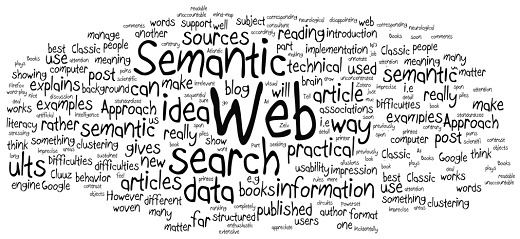
The main goal at the stage of semantic kernel formation is to find the so-called “Goldilocks”. These are queries that have a high enough frequency and can attract the target audience, but at the same time have a relatively low cost per click.
Why is this important? Imagine that you have selected keywords with maximum conversion rates, but the cost of clicking on them turned out to be so high that the budget burns lightning fast, and sales do not recoup costs. Agree, in this case, even the highest conversion rate will not save the situation.
Also, when working with semantics, it is very important to take into account the user’s intent, i.e. the purpose for which he or she entered this or that query into the search box. It can be:
- Commercial – when a person is ready to buy and is looking for a specific product or service to place an order. For example, “buy iPhone 16 Plus” or “order pizza delivery”.
- Informational – when a potential buyer is at the stage of studying the topic, gathering information and is not yet ready to make a decision. For example, he is looking for “iPhone 16 review” or “pear pizza recipe”.
In most niches, it is commercial keys that bring sales. But in some cases, depending on the specifics of the business and customer acquisition strategy, it can be effective to use informational queries at some stages of the sales funnel.
Regularly supplement minus-phrases
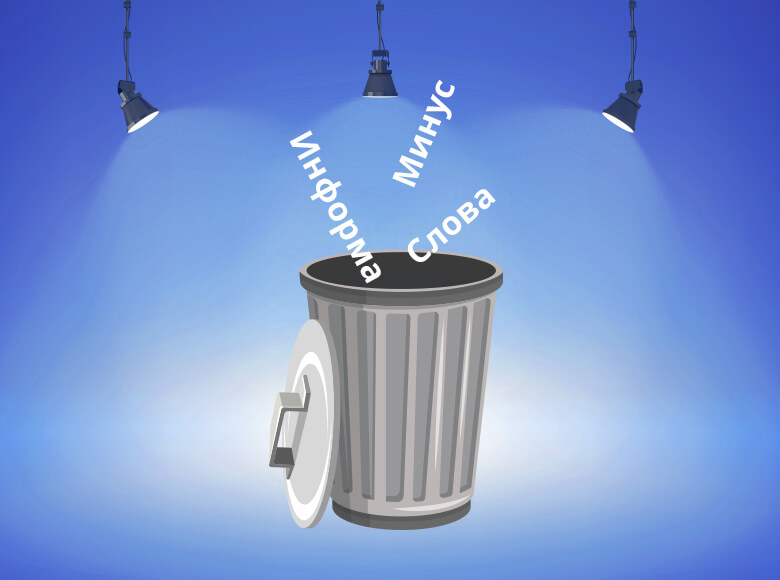
Let’s assume that you have already collected a quality semantic core that includes the most relevant keyword phrases for your business. However, this is not enough to maximize the impact of advertising. Why? It’s simple – even among the target keys can be phrases that will be clicked by people who are not interested in your offer.
Minus words can help you solve this problem. These are terms and phrases, the addition of which allows you to limit the display of your ads for irrelevant queries. Due to this you not only save budget, but also increase CTR and conversion rate.
Here are some examples. You sell only new office furniture in your online store. In this case, you should definitely add the phrases “used”, “for home”, etc. to the list of minus-words. This will cut off a part of the audience that is looking for a used table or kitchen set for home.
Another example: You offer the services of a lawyer on land issues. To ensure that your ads are not shown to a non-target audience, it makes sense to include in the campaign minus-phrases “on family cases”, “on divorce”, “on criminal cases”, etc. This will make it possible not to dissipate the budget for non-targeted clicks.
In addition, there is a list of phrases that are better to exclude for almost any topic:
- Jobs, vacancies, employment, employment, resume, salary;
- Free, download, torrent, crack;
- Meaning, definition, example, diagram, what is;
- Coursework, abstract, diploma, GDZ, wizard;
- On your own, with your own hands, instruction, scheme.
Of course, there is no universal list of minus-words – it all depends on the specifics of your business, assortment and goals. Therefore, work with minus-phrases should be carried out on a regular basis. Analyze the search queries that visitors use and, if necessary, supplement the list of excluded words.
It is especially important to do this if you are launching a sales campaign aimed at a quick return on investment. In such a case, you should definitely minus all informational and near-thematic queries in order to attract only “hot” customers who are already ready to make a purchase.
Study your competitors
When optimizing your campaigns, don’t dwell only on your results. Do not forget to regularly monitor and analyze the activity of competitors in your niche. This will not only help you find new ideas for expanding your semantic core, but may also suggest directions for the development of your business.
Let’s say you have noticed that your competitors are actively promoting a new product category or service that you do not yet have in your assortment. If there is demand for this product, and it could potentially be of interest to your audience – this is a great insight that will allow you to expand the line of offers and attract additional visitors.
Or, for example, you have seen that your competitors are using in their advertising messages offers that are attractive to customers – discounts, bonuses for ordering, free shipping, and so on. Having implemented something of the same in yourself, you will be able to raise the effectiveness of contextual advertising. The main thing is to always test hypotheses before scaling them up.
There are many special services for analyzing competitors, both paid and conditionally free. Among the most popular and functional ones are Ahrefs, SemRush, SEranking and Serpstat.
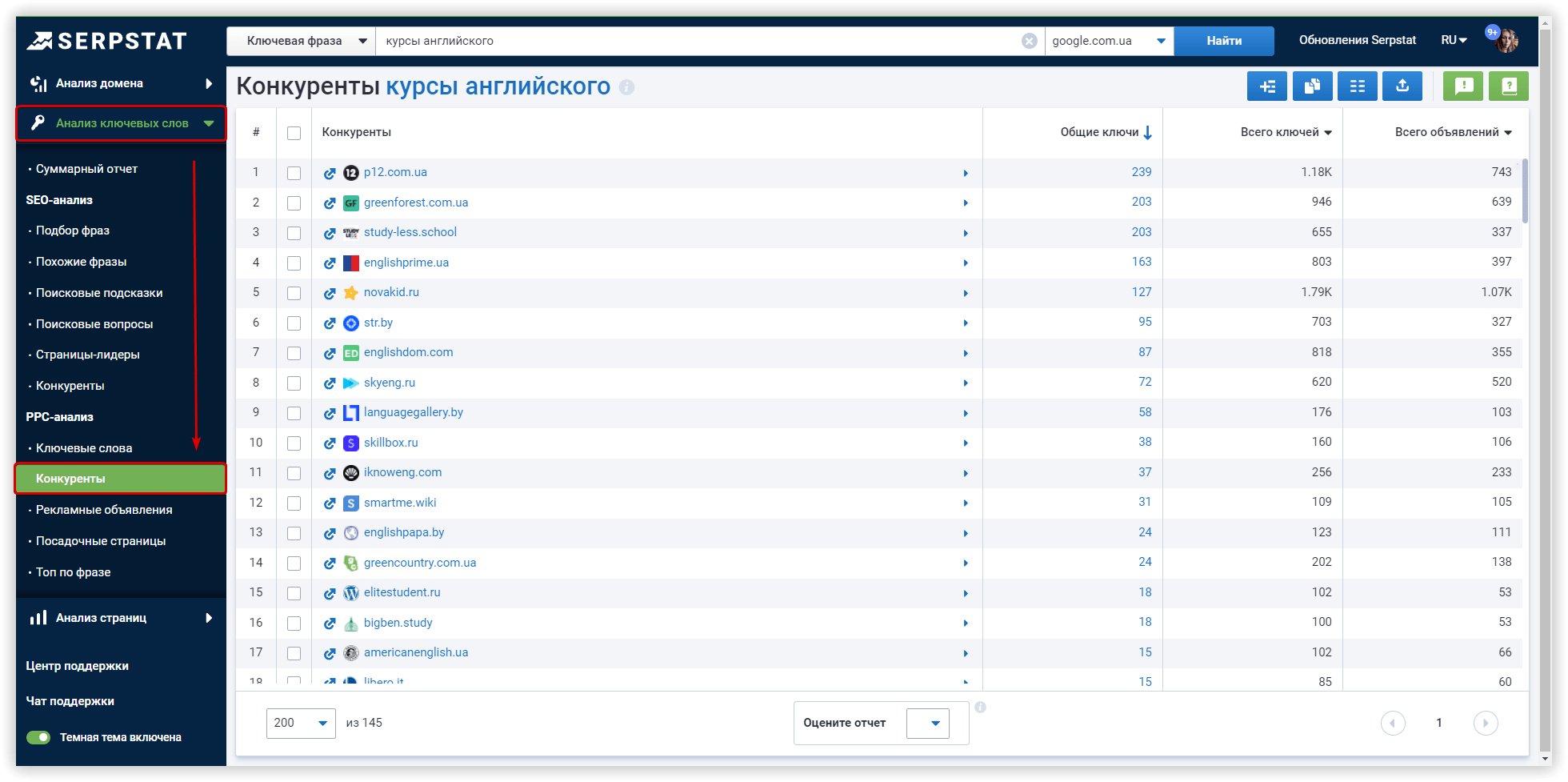
With the help of these tools you can track in a couple of clicks what keywords your direct competitors’ ads are shown for, what landing pages they use, how much they spend on traffic and much more. Of course, full access doesn’t come cheap, but most services have a free trial period or stripped-down functionality in free mode.
In addition, it is always useful to monitor the rendition, for keywords specific to your topic, through the eyes of an ordinary buyer. This way you will be able to evaluate the competitors’ offers with an open mind and understand how they can be attractive.
How to increase the effectiveness of contextual advertising by improving your website?
As a rule, the effectiveness of the campaign by 50 or even 70% is determined not by the settings of the advertising itself, but by the quality of landing pages. The better and more convincing your resource responds to the user’s request, the greater the percentage of the attracted audience will eventually become customers. And vice versa – ideal from the point of view of targeting advertising will not bring results if the web resource does not meet the expectations of the audience.
Therefore, when planning your budget, be sure to set aside time and money to optimize your online store or service site. This is an investment that will pay off many times over with increased sales.
Work with the landing page
The first and mandatory rule to increase the effectiveness of contextual advertising – 100% relevance of your content to what was promised in the advertising message. And this applies not only to the text description, but also to the visuals. If the headline mentioned a specific model of something – it should also be on the landing page. If the price or discount was emphasized – this information should be in a prominent place and be up to date.
The second point is the simplicity and convenience of searching for the desired product, service, information. Online stores must have filters and the ability to sort products by various parameters – price, popularity, newness, and so on. But you should not abuse filters either. If you have to set a dozen parameters to choose the right model, there is a good chance that a person will simply not do it and will leave.
Also, the web page should be intuitive and not overloaded with unnecessary elements. Calls to action (buy, order, get a consultation) should be in prominent places, and the transition to the application form should take a minimum of actions. If the path to purchase is long and thorny – the number of conversions will tend to zero.
How do you understand if everything is working correctly? The most objective indicator is web analytics data. Google Analytics will help you track people’s path from clicking on an advertisement to their final action on the resource or leaving it. And Microsoft Clarity service even allows you to observe the behavior of visitors in the record – you can literally follow every click and scroll.
Analyzing this information, you will be able to identify problem areas and make point changes. For example, if you notice that most visitors leave without clicking through to the section you need – perhaps you should place the call to action and application form higher up. Or you’ve discovered that visitors often click on inactive design elements – so it makes sense to make them clickable.
Look for “exit points”
Even a perfect landing page does not guarantee 100% conversion. After all, the path to the target action (purchase, application, call) is often not limited to a couple of clicks. And on this path there may be “bottlenecks”, because of which potential customers leave without making a transaction.
How to identify these problem points? To do this, you need to track and analyze the behavior of visitors to your online platform. And at all stages of their interaction with the resource, regardless of the source of transition. Whether it is contextual advertising, organic search, posts in social networks or email newsletters.
The key tool for such analysis is end-to-end web analytics. It allows you to track the full path from the first touch with the site to taking a targeted action or closing the page. The main thing here is to identify those pages and elements on them that become “exit points”.
How many calls and sales will I get by ordering contextual advertising from you?
I need to calculate the conversion of my website Describe
the task
in the application
Calculate potential ad revenue Google
contextual advertising calculator
For example, you have found that a significant portion of users leave at the point of checkout without completing the order. With the help of behavioral analysis, you can understand at which stage this happens most often. Perhaps it’s a form that’s too long and complicated that people simply don’t want to fill out. Or the lack of the right payment and delivery options.
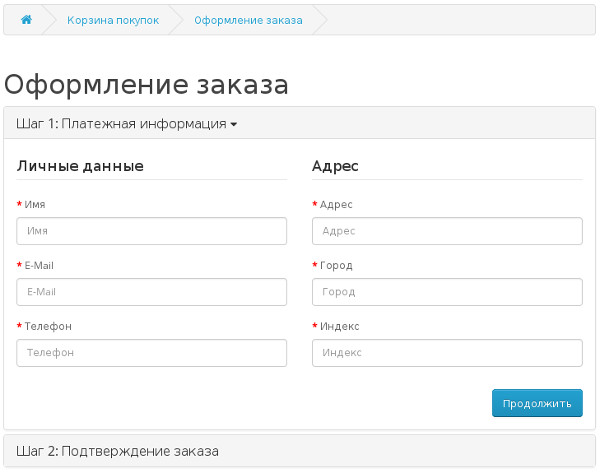
By making point changes (simplifying the form, adding popular payment systems and options for receiving the goods), you will eliminate these barriers and increase the percentage of successful orders. By the way, this is why many online stores go the way of reducing the mandatory fields in the order form. After all, it is much easier to clarify the details later by phone than to lose a customer at the stage of placing an order.
Or another example – you have a very useful and detailed article that ranks well in search and brings a lot of traffic. But there are almost no conversions to leads or sales from it. Again, behavior analysis will show that most readers leave immediately after reading, without clicking on calls to action and without studying your services or products.
In this case, it makes sense to work on a smoother transition from the article to the commercial section of the resource. Add widgets with recommended products on the topic, links to related services, pop-up offers when trying to close the tab. That is, push the “warmed up” useful content of the visitor to the next step of the sales funnel.
Other ways to improve the effectiveness of contextual advertising
In addition to working with the semantic core and improving the quality of landings, there are a number of additional methods that help in improving the effectiveness of contextual advertising. By applying these techniques, you can attract higher quality traffic, increase conversion rates, and improve your overall profitability.
Track conversions
Modern web analytics tools, the same Google Analytics, allow you to track the behavior of website visitors in detail and determine which keywords and ads bring the best results.
However, to fully assess the quality of traffic, it is not enough to simply install counters and link analytics systems to the right accounts. You also need to set up goals that reflect the fulfillment of desired actions, be it subscribing to a newsletter, placing an order, registering or filling out forms.
Achieving these goals will be counted as conversions, and in analytics systems you will be able to track their number and value by various parameters.
Work with the CTR of ads

CTR reflects the ratio of ad impressions to clicks. A low CTR signals to Google that the quality of your ads is low, which leads to a decrease in the frequency of their impressions.
However, you can independently influence this indicator, increasing it to reduce the cost per click and improve the perception of ads by the search engine, or reducing it to filter out untargeted audiences.
For example, if you sell women’s handbags from luxury brands and advertise on the request “buy a woman’s bag”, you will get, among others, and customers interested in the budget segment.
They will actively go to the site, but they will be immediately scared off by the high price. In this case, specifying the words “designer”, “luxury” or “brand” in the title, you will reduce the CTR, but at the same time and screen out untargeted visitors, saving the budget for clicks.
Watch out for scrolling
After launching an ad campaign, competitors will immediately start clicking on your ads to evaluate the new player in their niche. This will definitely lead to wasting part of your budget, despite the high CTR.
To identify the problem of scrolling, it is necessary to compare the number of sessions recorded in the web analytics system with the number of clicks in the advertising campaign. The normal ratio is 80% for search campaigns and 60-70% for CMC. A significant discrepancy in these figures may indicate a malfunction of the counter or scrolling, which must be dealt with.
Create separate campaigns for different regions
Within a single campaign, the cost of clicks is determined by the most expensive region, which can lead to overpaying for traffic. So, if you work all over Ukraine, it is obvious that the most expensive clicks will come from Kiev. Therefore, be sure to create a separate campaign for each region.
In addition, it is important to advertise only in areas where your company can provide services. It is pointless to advertise a car showroom in Dnipro if it is located in Kiev.
Analyze which locations do not bring applications and reduce the rates for them, and for profitable regions, on the contrary, increase them. Thus, regional targeting allows you to direct your efforts to the most promising locations and avoid unnecessary costs.
Use hyperlocal targeting
This is a powerful Google Ads tool that allows you to personalize your advertising messages to specific areas of the city as much as possible. For example, you can collect audiences that are in a certain neighborhood more than 5 days a week or 22 days a month. This way, you can be sure that they live, not work, in that location.
Target this audience with ads if your business is located in this area. For example, show Podol residents an ad about opening your beauty salon near Taras Shevchenko metro station. This approach increases clickability, making the offer more relevant and attractive.
Separate search advertising from the media network
Search ads are usually seen by an audience that has already decided what it needs and is actively looking for where to order goods or services by entering specific queries. It is more motivated to make purchases at this particular moment.
In turn, PBC allows you to place advertising messages on Google partner sites, where visitors are not aimed at buying right now – they are just surfing the Internet. Accordingly, the bids, auction and ad types for search and PBC should be different.
By allocating a separate campaign for search and contextual media network, you will be able to separate the more motivated traffic and assign it the highest bids, and more “cold”, with a low click price.
Turn off ineffective sites

Don’t forget to regularly analyze KPIs for each site and disable those that bring few clicks or don’t bring orders. This process can be done manually by viewing the statistics in the Google office and making decisions based on the data obtained.
Disabling weak sites allows you to focus your funds on more effective traffic channels and improve overall campaign results.
Connect remarketing
This is an effective way to increase the effectiveness of contextual advertising, which allows you to “reach” people who have previously visited your web resource, but did not make a targeted action. According to Optimizely, 92% of new visitors do not make a purchase on their first visit. However, thanks to remarketing, they are 70% more likely to order from you than from your competitors.
Re-attracting visitors who have previously seen your site will cost less than attracting new ones, and the profit from returned users can be a significant part of sales. Statistics show that up to 40% of visitors repeatedly attracted from the context become customers of the company.
By setting up remarketing, you can inform people about new products, promotions or remind them of items left in the shopping cart. The tag assigned to the visitor allows you to show him personalized ads even after closing the site, encouraging him to complete the purchase, for example, offering a discount for an immediate order.
When setting up remarketing, Google allows you to categorize visitors into groups based on whether they have achieved certain goals in their interaction with the site. This fine segmentation ensures that more precisely worded offers are shown to each group, increasing interest in repeat visits.
Remarketing ads can have a variety of formats, not limited to standard text. They can be animated banners, pop-ups and other creative solutions to attract the attention of potential customers.
Work with those who have already ordered before
Many owners of online resources mistakenly believe that visitors who have already made a purchase are no longer of interest to the business. However, practice shows that it is these customers who generate two or three times more leads than new ones. This effect is based on already formed trust in the company and positive experience of interaction.
For repeat customers there are special remarketing strategies based on the rule “offer something more than before every time”. These can be promotions on consumables or related products, loyalty program updates and other activities that encourage repeat purchases and build customer trust.







